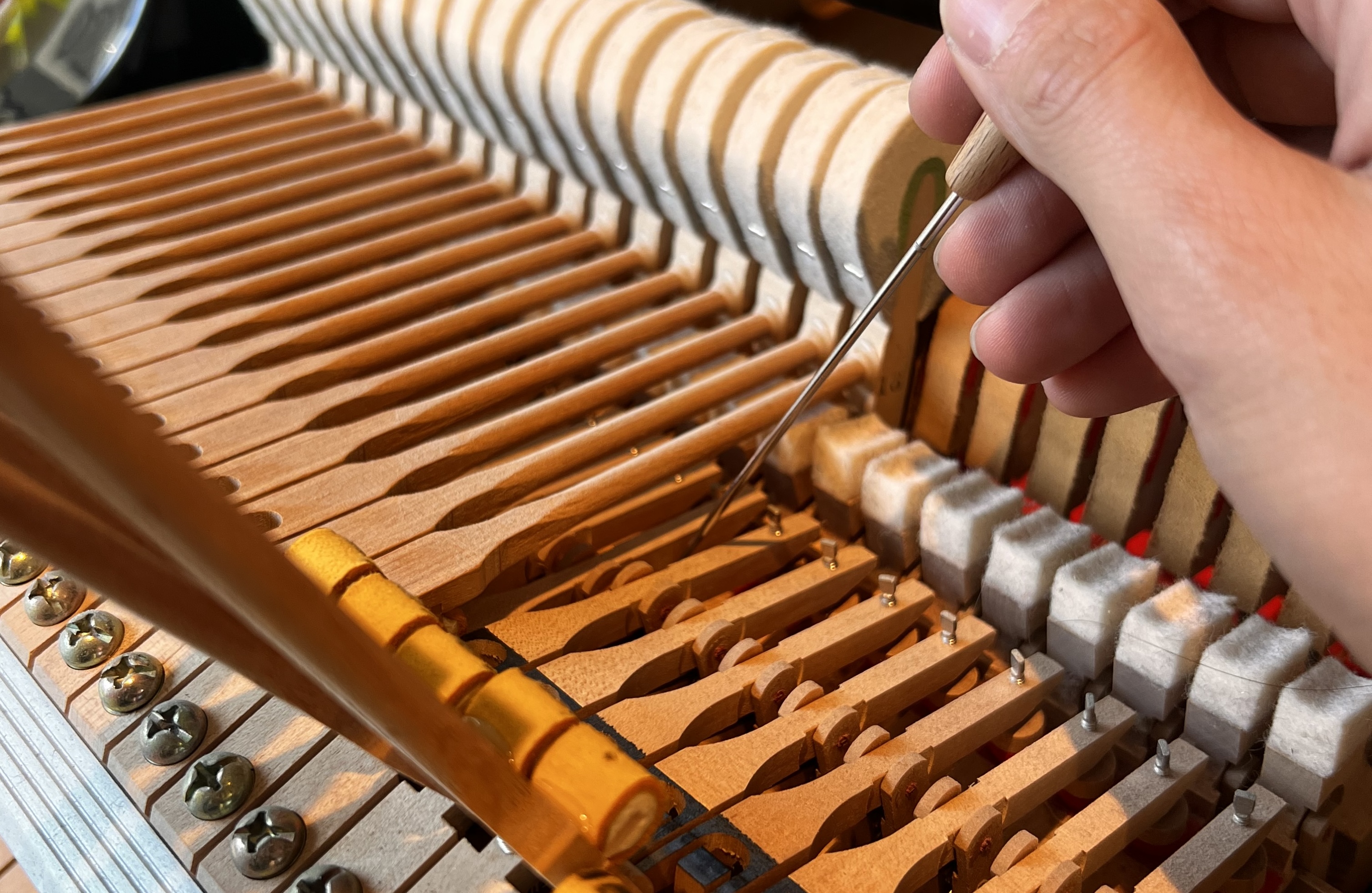What is Flow Piano Maintenance?
And why you are fooled by the dealers.
Do you know?
Piano companies only make pianos to its 50% potential, even on most expensive grand models
The rest of work is supposed to be done in the shop before delivery which is called Pre-delivery Setup
If this long-hour craftmanship isn't done by the dealer, it usually takes at least 5 tunings for your technician start to tap the other half of the potential of your brand new piano. And this is depend on you don't forget your six-mouth tunings. (whereas the free tuner from the shop would never want to do that. Because would make the shop look bad.)
Piano technicians focus their work on not just Tuning.
Regulation and Voicing are equal or more important than tuning itself to a good piano.
At Flow Piano, our goal is to make you feel your real piano at least once. Piano factories make you the furniture (sounds like a joke, but it is true), a good piano technician makes you a great instrument.
Regulation,

If you visit the most expensive piano shops, you will find how responsive their pianos are. This is the difference between an 'okay' regulation and a concert regulation.
Each regulation process prepares for the next.
Until the last process, you cannot enjoy the final results. A proper thorough regulation takes up to a whole day.
The regulation with the measurements are just "OK" regulation. Just like you cannot avoid using your ear to do proper tuning, you cannot avoid feel the 'touch' to do proper regulation. To bring your piano to its potential where it is designed to be, the work is not merely visual anymore. All the adjustments are based on "touch".
Because once you have played your piano, all the parts have slightly different measurements. The goal is not simply looking the same, but touching the same.
This is also why few piano tuners want to "touch" grand piano regulation. Grand pianos are too sensitive to the adjustments.
They think they did the visually good job, but sometimes it plays even worse.
Just a brief view of what it covers:
Keyboard
-
Keyheight: if you look at the very old pianos, you can visually see some keys are lower than the others. You can find the peaks and valleys on the keyboard. Most of the time, when you run your fingers across the keyboard, you can feel it. Once a good job is done, it should look like this:
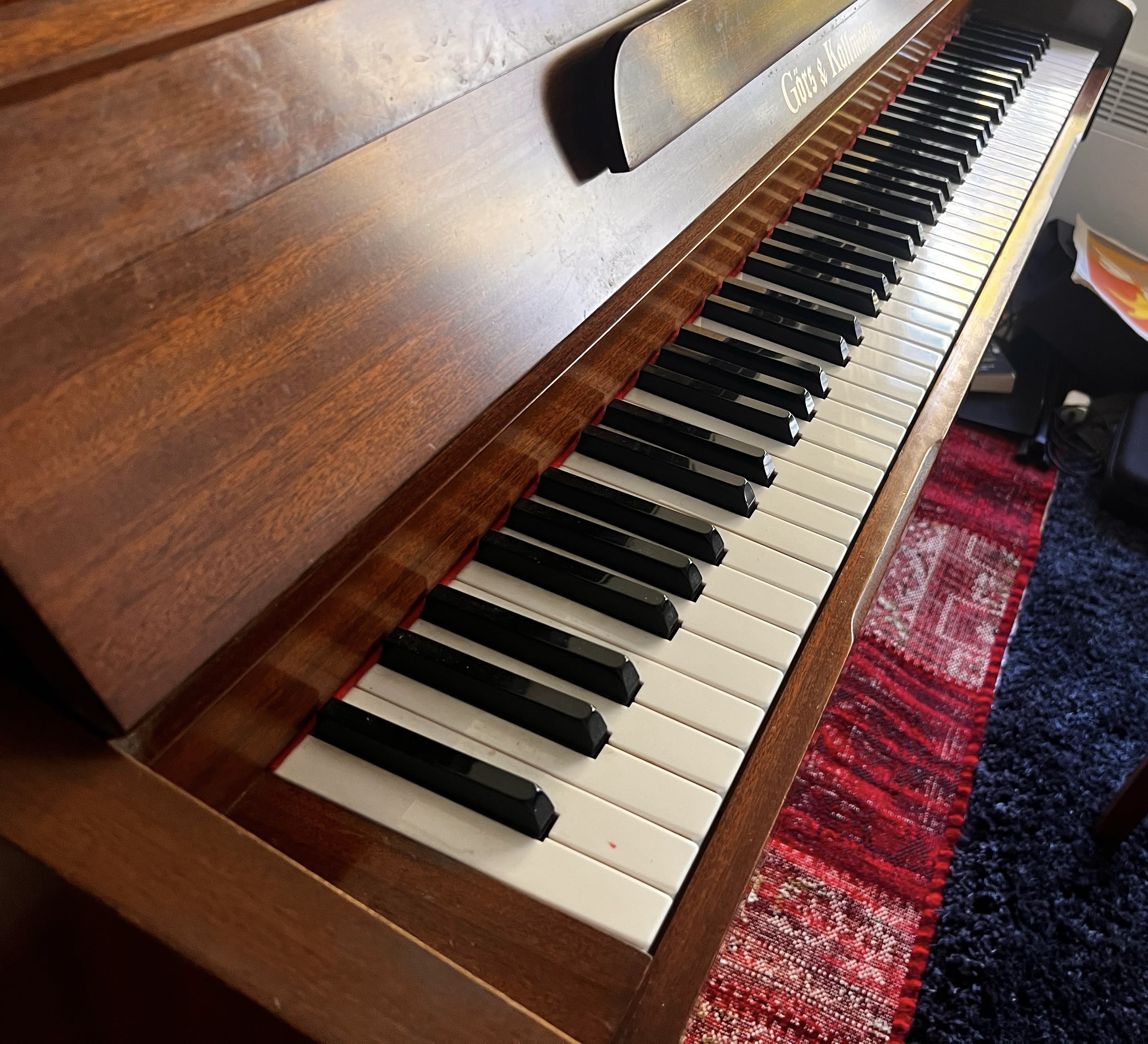
-
Key depth: this is very important as how much one key can be pressed 4.6 times the amount the end movements of the hammer running. The consistency among all the keys are crucial. This is also how you remember the touch of the piano keys. It changes over time.
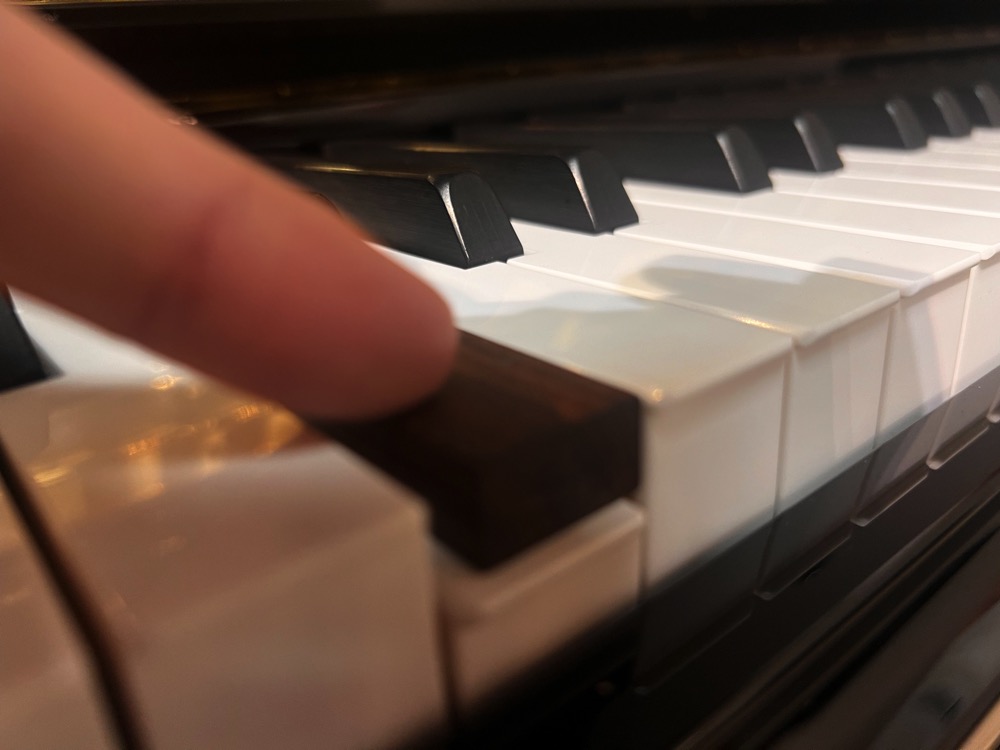 ↑ keydepth block
↑ keydepth block -
Bushings and pins: This need to be checked overtime as well. Same consistency. If it is too loose, your keys will start making noise. If it is too tight, you have sticky keys.
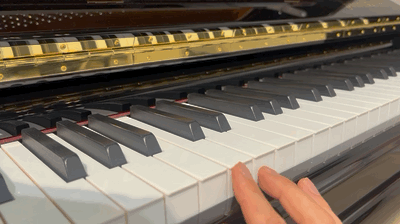 ↑how a lubricated keyboard suppose to be like
↑how a lubricated keyboard suppose to be like -
Key spacing and more: once you make everything perfect, the piano keys are like a cake. Not only does the keyborad are prepared for the action to work properly, it also attracts you to express yourself on it more. Just this part, even brand new pianos has a small room for improvement.
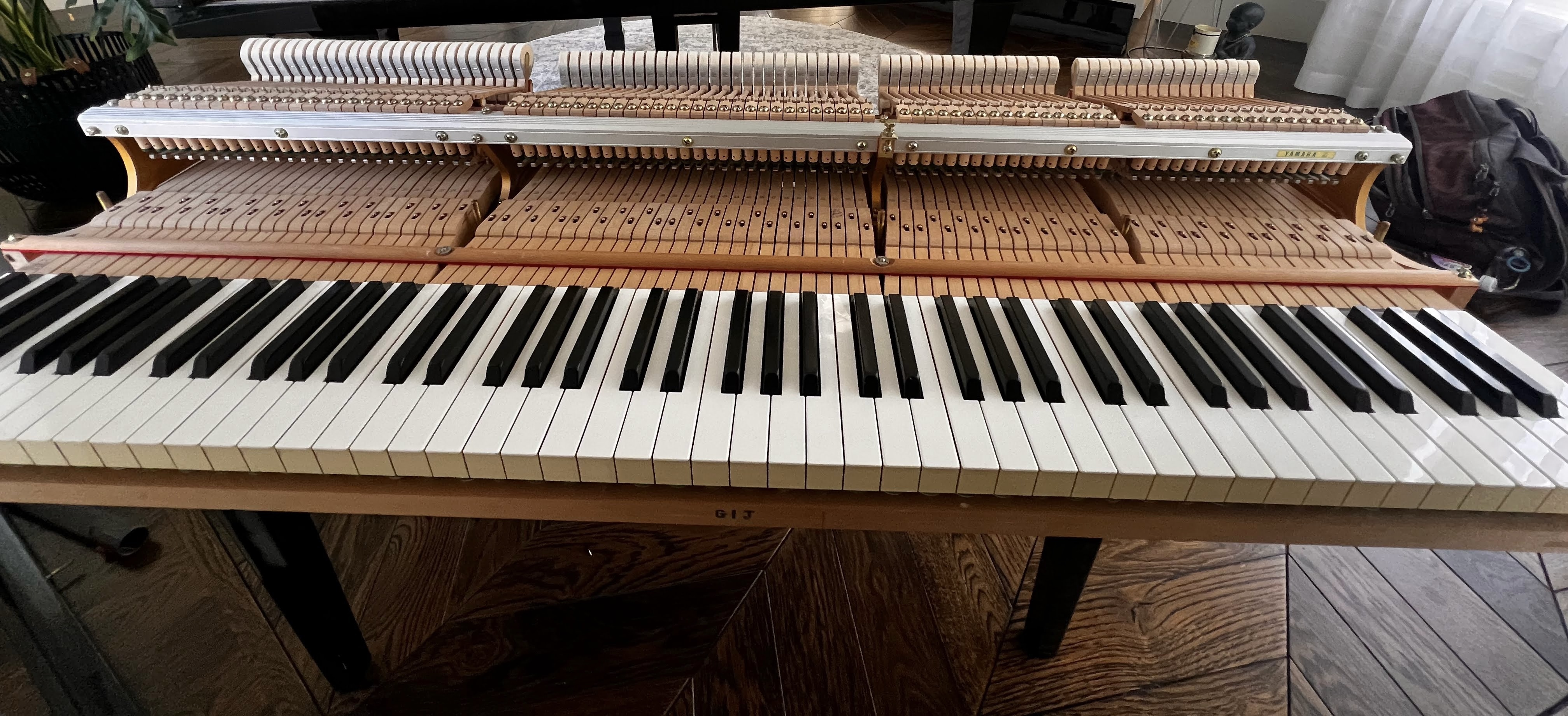
The action (use grand piano as example)
-
Spring strength: these springs usually are not consistent after just one year of playing. It is the basis of a grand piano action
-
Striking distance: on a brand new piano, sometimes the technician forget to adjust it and it will be like this: A brand new Yamaha made in Japan just unboxed
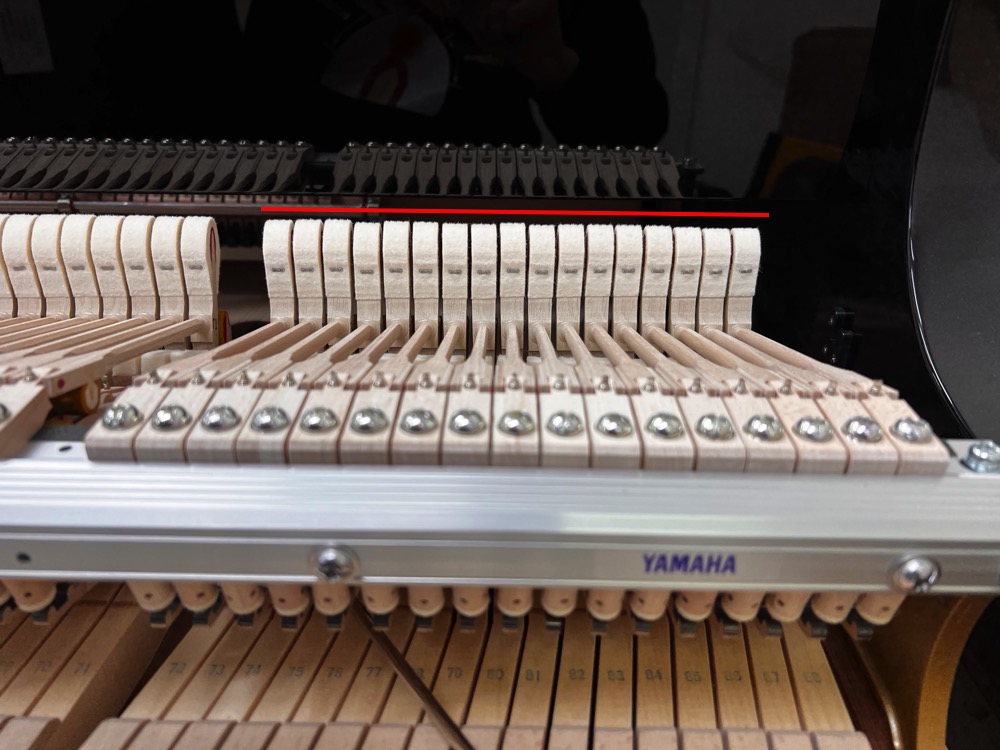
-
Keybed: make sure the action is sitting on the keybed properly without any gaps.
-
Let-off: let-off is the timing where the hammer is disattached from your finger. This is the most important thing on a upright. A brand new piano usually is set to a safer range.
-
As the factory want to make sure the piano can still work regardless of the condition of the shipping and storage before it is being sold. A safe(wide) let-off means the piano is not responsive enough, but it will work anyway.
-
Drop: It is the grand only stuff. It is a mechanisem prepares you for the second control of the hammer after you already pressed down a key (After-touch). This is often not working on a brand new grand piano.(It works like an upright, then we can say it is not working) Most people exaggerate the repitition speed when talking about drop. But it helps more than this. It also gives you dynamic range of the sound you can create. It granulate your control of the sound. Lastly, it is supported by how the springs are working.
-
Hammer running and alighment: these are the basis to make sure the hammer is hitting the right position.
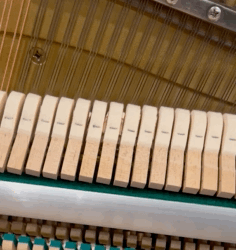 ↑A sluggish hammer
↑A sluggish hammer
Pedals and dampers
- Make sure the sound can be stopped properly when the dampers are applied.
- Make sure the pedal is triggered in the right timing when you step down on it.
These are only some brief ideas of it works. The whole process will last for a whole day. A very intense day if the piano has not been touched for ages.
So, without further notice we can on be focused on some of these procedures or voicing. E.g. once the customer chose to improve the keyboard, it usually means the technician has no time to touch the responsiveness of the piano. He can only do a compromised job if this piano has no one touched on the regulation before.
Voicing
Only when the tuning and regulation are excellent can the voicing be outstanding.
The goal is Consistency,Dynamics, Rich, and Alive.
Without voicing, even with the best tuning and regulation, the piano could still sounds like a 'tin can'.
This is the art of this job. This is the moment your piano technician is singing with your music by making your piano sing.
Just like "not all the piano technicians can play the piano", not all the piano technicians can 'sing' with you.
It requires years of experience as there is no gauge to tell you what is right and what is wrong. He needs to remember the goal of achieving a good sound and reproduce that sound on your piano.
Not only that, but each piano is different. He will also need to align his goals with the unique sound that this particular piano is capable of creating.
Generally, what we are looking for is that when you play gently, your piano gives you an indoor intimate feeling. When you play powerfully your music wounld sounds like a symphony.
Tuning,

As you already know, involves adjusting the pitches and harmony of different frequencies. The goal is to achieve good unisons, good temperament, and good pitch.
We only do the best tuning we can do in the industry.
However good a machine can tune, it can never make the equal temperament as good as an ear tuner over the whole piano.
No machine can replace an expert to turn the tuning hammer and achieve the tuning stability.
It needs at least 10 years to master the way you turn the tuning hammer.
By performing regular maintenance, we provide the best tuning, along with essential regulation and voicing.

